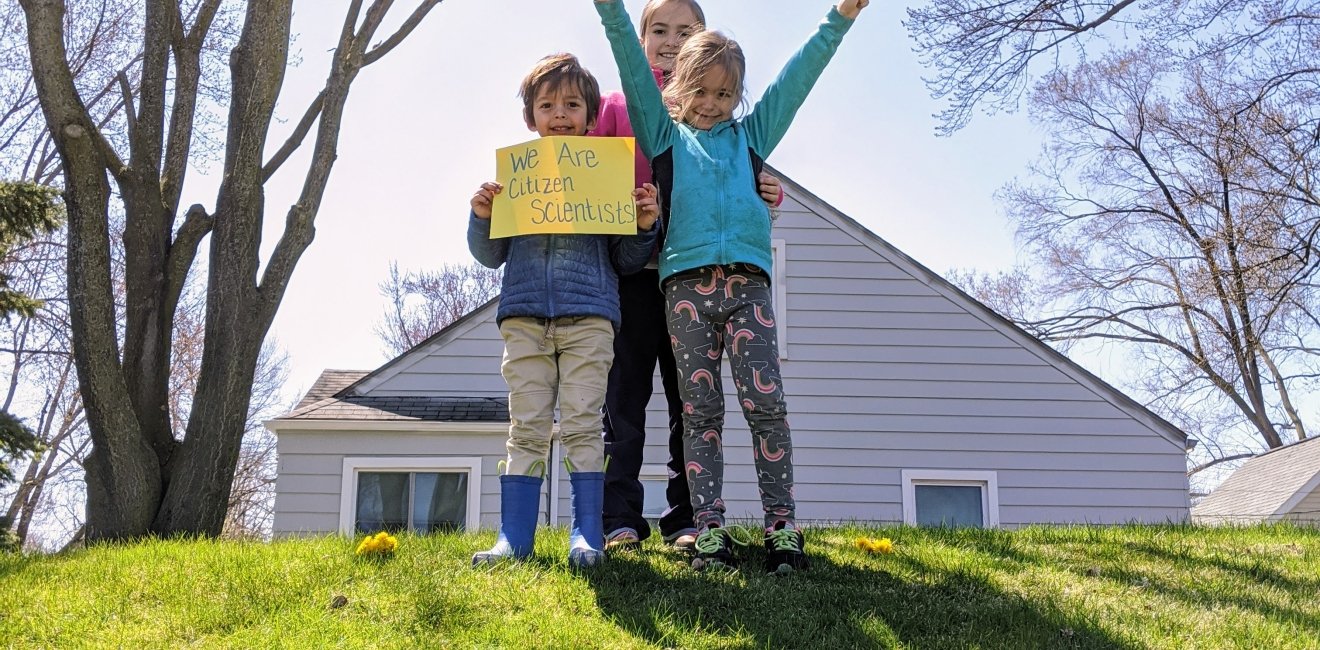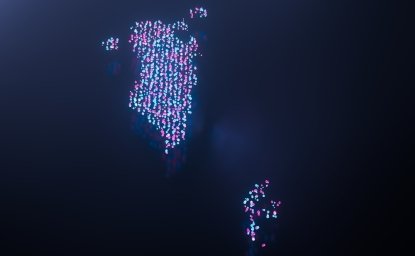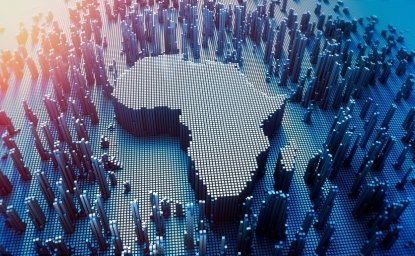
A blog of the Science and Technology Innovation Program
April 22nd, 2021 marks the 51st anniversary of Earth Day–and the one-year anniversary of Earth Challenge 2020’s launch.
Last year, a consortium of partners led by the Wilson Center, EARTHDAY.ORG, and the U.S. Department of State leveraged excitement around the 50th anniversary of Earth Day to launch Earth Challenge 2020, a new platform for increasing the amount of open and interoperable citizen science data, and a new mobile application to engage the public in science and action. Six months ago, we reflected on the successes and lessons learned from the April 2020 campaign. Today, we’re excited to offer an update on recent achievements and announce plans for moving forward, including rebranding as “Global Earth Challenge” and the launch of a revamped mobile app and image classification campaign.
Refining Our Value Proposition
In October 2020, we shared information on how we are leveraging partnerships to help Ghana track progress towards SDG goal 14.1.1.b., work with the International Institute for Applied Systems Analysis (IIASA) on classifying crops to understand global food security, and work with Earthwatch and EY on an air quality corporate social responsibility (CSR) campaign.
First, we continue to work with Ghana, alongside IIASA, the United Nations Environment Programme (UNEP), Ocean Conservancy (OC), and the Smart Nature Freak Youth Volunteers to leverage the SDG framework to bridge local data collection and global monitoring and assessment processes. In addition, our broader efforts working with data from citizen science projects including the OC’s International Coastal Cleanup Data, European Environment Agency (EEA)’s Marine Litter Watch, and National Oceanic and Atmospheric Administration (NOAA)’s Marine Debris Monitoring and Assessment Project led to a related achievement: in February 2021, citizen science data was used in reporting progress towards SDG 14.1.1.b, plastic pollution measured through beach litter per square kilometer, for the very first time.
The data used in reporting was taken from Earth Challenge combined datasets from 2015-2018, along with annual data for 2019 and 2020. In addition to being made available through the SDG indicators database, our will be featured on a forthcoming Global Partnership for Marine Litter (GPML) Digital Platform created by UNEP and partners. This achievement showed that providing a single point of access for interoperable citizen science information can enable the reuse of citizen science data by the research and policy community, a theme that will continue to shape our efforts moving forward, as described below.
Second, we’ve submitted our first peer-reviewed publication describing the results of our food security campaign with IIASA. Since July 2020, Earth Challenge 2020 volunteers made 123,187 classifications. This work has enabled IIASA to validate 28,706 out of 68,542 photos in cropland in their database. It also validated our emerging assumption that users of the Earth Challenge 2020 mobile app don’t just want to take pictures of things, but are interested in other types of scientific tasks as well.
Finally, we concluded our first successful CSR campaign, with Earthwatch and EY. We continue to work with Earthwatch and other partners on targeted campaigns that enable organizations to use our mobile application and customized dashboards to understand their community’s participation and, in some cases, act directly on the data. For example, students at Georgetown University have launched Pick It Up!, a university-wide campaign around plastic pollution. In addition to creating a comprehensive playbook and collecting data, students built a dashboard to practice geographic information systems (GIS) skills while tracking student progress. The Georgetown Provost talked about this “Action-Oriented Research” in a recent blog post, and the students are currently working with the Wilson Center and EARTHDAY.ORG to help other universities understand how to replicate their successful model. Leveraging the power of discrete, topic- or community-based campaigns will be a significant part of our strategy for 2021 and beyond.
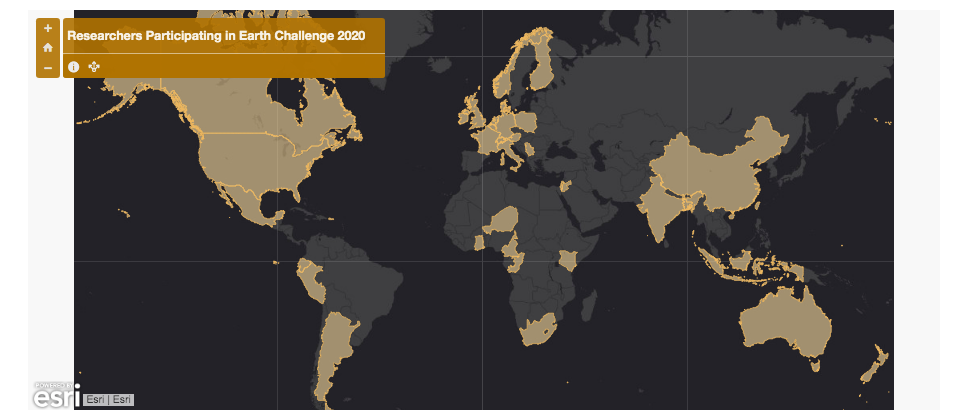
Picking up Momentum
We remain committed to the initial vision of Earth Challenge 2020, to create opportunities for data collection and harmonization around six research areas: air quality, water quality, insect populations, plastic pollution, food security, and climate change.
To date, we’ve launched successful citizen campaigns around plastic pollution, food security, and air quality, along with an outreach campaign around bees. In the coming months, we will use our data integration platform to explore the opportunity for innovations around looking at how new automated identification techniques can be leveraged to monitor disease-carrying mosquitoes. By taking a novel approach to machine learning that segments the image into relevant anatomical features, we hope to make it easier for authorities to identify mosquitoes from citizen science smartphone submissions, while also creating opportunities to educate volunteers on what feature led to a particular classification.
We hope to explore opportunities for citizen science research in water quality and climate change in the second half of 2021. While we are looking for groups to partner with us directly, we are also slowly refining our model. Our hope is to eventually transition from more hands-on and labor-intensive to progressively more independent partnership models.
When we started Earth Challenge 2020, the Wilson Center believed that–as the designated Science lead–it was critical to partner directly with members of relevant research and policy communities to make sure that our data was not only usable, but also used. We created a framework, the Earth Challenge 2020 research teams, to help recruit experts to join informal advisory panels and shape our approach to data collection and integration. Through this process, we received a lot of feedback on what not to do, understood opportunities to avoid duplication, and laid the groundwork for some extremely rewarding partnerships. We are truly grateful to everyone who contributed to a research team, or otherwise offered us advice, and we will continue to welcome feedback from the citizen science community. We are similarly grateful to the organizations who have partnered with us so far, and appreciate the projects we have been able to conduct, including the examples highlighted in this blog post.
At the same time, in order to scale the project and help make it sustainable, we are exploring how to transition Earth Challenge 2020 from a handful of discrete, goal-oriented projects to a larger, more flexible platform. We will spend the next 6 months focusing on the re-design of two important elements of our technology stack: the Earth Challenge mobile application, and the Citizen Science Cloud.
Today, there is a new version of our app–named “Global Earth Challenge”–available for download and testing in major play stores. Rather than direct volunteers to explore a particular research area or project, we are focusing on designing around four main actions, or competencies:
- Capture will invite volunteers to take pictures of the environment.
- Classify will include options ranging from image classification, to annotation, to (eventually) drawing a bounding box around the relevant parts of an image.
- Learn will direct volunteers to both general educational modules and more specific tutorials.
- Act will highlight opportunities to join nearby events, or sign relevant petitions.
Beginning with a friends-and-family Earth Day 2021 launch, we are taking what we learned through the popularity of the Picture Pile food security widget to launch a second image classification campaign around plastic pollution, which will focus on images from the Marine Debris Tracker app and previous Earth Challenge 2020 data. Our goal is to create a labeled dataset of at least 5,000 images of different types of plastic pollution. Through this campaign, conducted in partnership with Marine Debris Tracker, we hope to make progress on a critical environmental issue, enable more work at the synergy between citizen science and artificial intelligence, and–most importantly–learn even more about what our volunteers like to do when they classify images using a mobile interface.
By leveraging this knowledge and lessons learned from climate change and water quality, our ultimate goal is to create a toolkit that enables any researcher to use capture, classify, learn, and act functions to create their own mobile-based citizen science campaign. Some of the groundwork required to achieve this–the ability to associate a collection of observations with a particular organization or community group–is already in place. We seek to develop additional functions collaboratively, leveraging the same enthusiasm and interest that led people to sign up for a research team to help inform this evolving trajectory.
Lastly, we will continue our work with the Open Geospatial Consortium (OGC)’s Citizen Science Domain Working Group. Earth Challenge was the third implementation of the evolving SensorThings API Standard, and it is our intent to build on the work of others to help drive agreement on a citizen science data standard formalized through OGC channels. This work will underpin our ongoing work on the Citizen Science Cloud, which will include a re-design along with simplified workflows for projects seeking to make their data interoperable, and provide a second point of access to enable reuse.
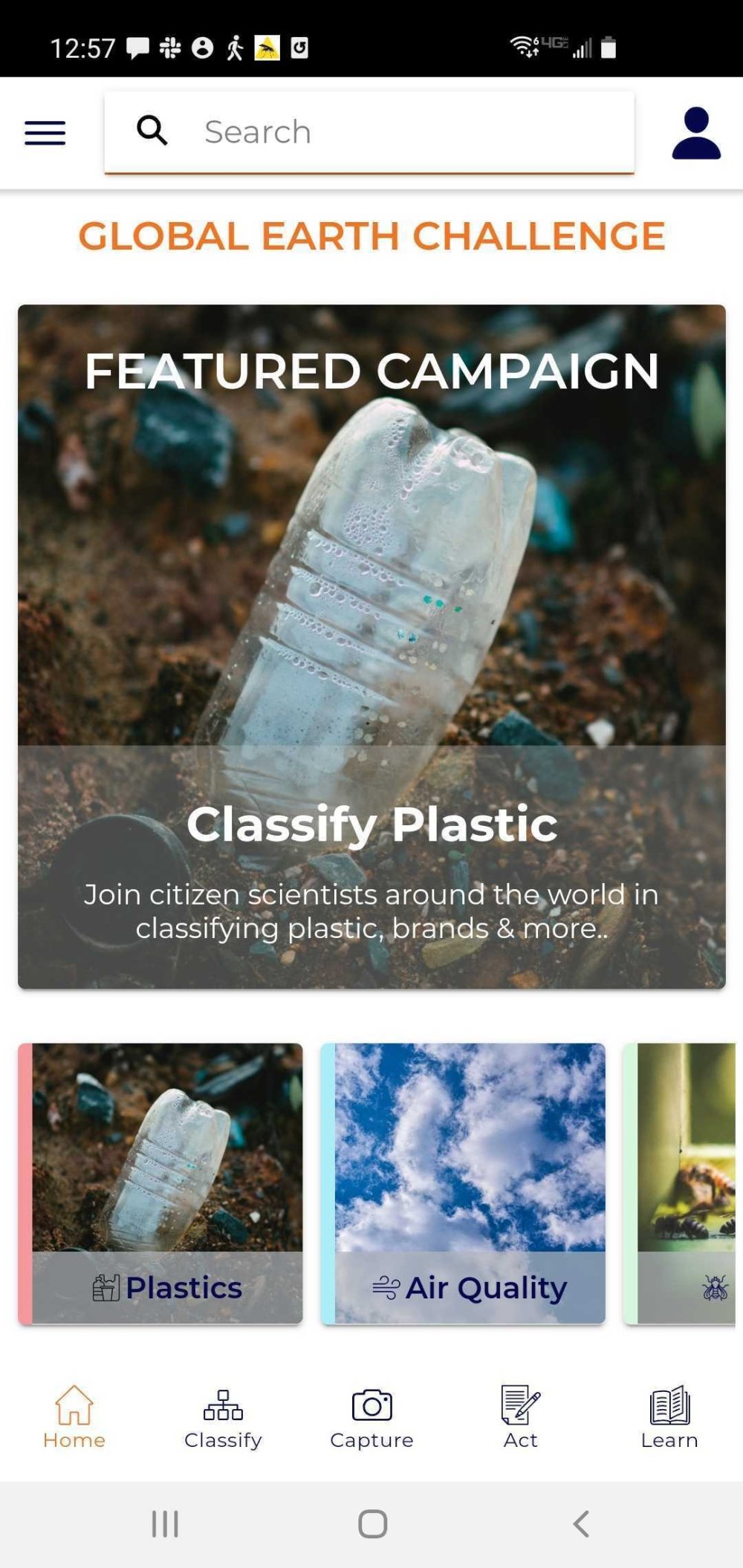
Putting our Project in Context
In late 2017 and early 2018, the beginning of Earth Challenge, there was no way of knowing where this project would lead. There was no way to predict that the original launch date, April 22, 2020, would happen in the early days of a global pandemic. But during such a grim year, the power of Open Science and community lead efforts provided bright spots along the way. From new citizen science projects, to strides made by the open source hardware community in response to infamous PPE shortages, to the early and public sharing of SARS-CoV-2’s genetic material, Open Science and the democratization of data pushed our society forward.
With this iteration of Earth Challenge, we intend to make it even easier for community groups, municipalities, and industry to take what we’ve already made and make it more local, global, and personally meaningful. Our six research areas are, unfortunately, issues that show no signs of disappearing any time soon and affect us all differently. The open and modular nature of what we are attempting to create uses those differences as an asset, not a hindrance, by allowing different scientists and community groups to create citizen science campaigns to explore what a general concept, like climate, uniquely means to them. We believe the new Global Earth Challenge app and our continued work on standards will continue to help bridge the local and the global, addressing local challenges while creating the infrastructure for global data and technology re-use.
Along the way, issues arose and new questions were brought to the fore that we are still working out. If we are creating this customizable platform, how do we ensure the experts in the research teams and the experts not yet involved with the project can provide guidance on emerging problems? How can we encourage new citizen science projects to work in tandem with ongoing citizen science efforts beyond just data standardization? And where can a virtual toolbox, project, and accompanying database live and thrive–what does that look like in terms of partnerships?
The questions will probably not run out and neither will the ability to innovate around them. If that sounds like something you’d be interested in, reach out to Anne Bowser and Alex Long, at anne.bowser@wilsoncenter.org and alex.long@wilsoncenter.org. And please stay tuned for another update six months from now.
Authors



Science and Technology Innovation Program
The Science and Technology Innovation Program (STIP) serves as the bridge between technologists, policymakers, industry, and global stakeholders. Read more

